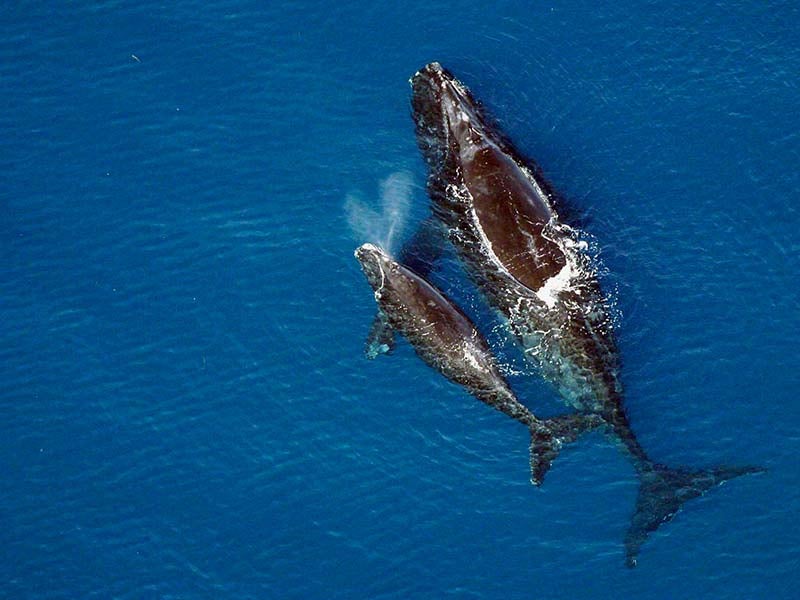The Surprising Climate Power Behind Whale Poop
Saving whales could be a high-impact solution to combating climate change.

This page was published 6 years ago. Find the latest on Earthjustice’s work.
When it comes to sucking up carbon, trees are often — and rightly so — known as sequestering superstars, storing about a third of the world’s emissions within their massive trunks.
But a new paper suggests that we should look both up to the trees and down into the seas if we really want to combat the climate crisis from all angles, including by sequestering carbon emissions.
According to researchers at the International Monetary Fund (IMF), great whales are the “carbon-capture titans of the animal world,” absorbing an average of 33 tons of C02 throughout their watery lives.
But whales don’t just store enormous amounts of carbon, they also turbocharge the ocean’s own carbon cycle by doing something we all do: pooping.
Each day, the great whales eat thousands of pounds of iron-rich seafood like krill, converting these foods into iron-rich feces that turbo-charge the growth of another ocean species, phytoplankton. Also known as microalgae, phytoplankton are carbon-sequestering superstars in their own right. According to the IMF’s paper, those microscopic green specks meandering in the ocean cumulatively capture as much carbon as 1.7 trillion trees, or four Amazon rainforests.
The more whales there are, the more food they eat and waste they make, which then serves as fuel for phytoplankton, which then serves as food for krill and other whale munchies. It’s the ultimate recycle-a-thon, and it greatly benefits people and the planet.
Unfortunately, humans have thrown a wrench in that cycle by killing off many of the world’s whales. During the last century, whaling expeditions killed off an astounding 3 million cetaceans. Scientists believe it may have been the largest cull of any animal in human history.
Today, the most serious threat to whales is the accidental capture of marine life by fishing gear — an incident known as bycatch. According to the International Whaling Commission, fishing gear entraps and endangers at least 300,000 cetaceans every year.
The North Atlantic right whale is particularly threatened, with less than 400 of them left on earth, with fewer than 95 breeding females. Over the past decade, there have been more right whale deaths than births, causing scientists to worry that the already critically endangered species could nosedive to extinction in the next few decades unless regulators enact stronger protections.
In October 2019, an Earthjustice and Conservation Law Foundation court victory signaled some hope for the flailing species. After finding that government regulators violated the Endangered Species Act when they opened thousands of square miles of critical right whale habitat to harmful fishing, the district court judge prohibited the use of sink gillnets — walls of mesh designed to entangle animals that swim into them — in two areas off the New England coast covering approximately 3,000 square miles.
It was a significant win for a species that can’t afford to lose even a single whale without risking extinction, according to the government’s own data. As the right whales begin to appear in the waters off South Carolina, Georgia, and Florida this month, scientists and whale lovers alike are watching them closely, hopeful that the sighting of the whales’ dark gray bodies floating peacefully through the turquoise seas won’t be their last.
Earthjustice’s Oceans Program uses the power of the law to safeguard imperiled marine life, reform fisheries management, stop the expansion of offshore oil and gas drilling, and increase the resiliency of ocean ecosystems to climate change.